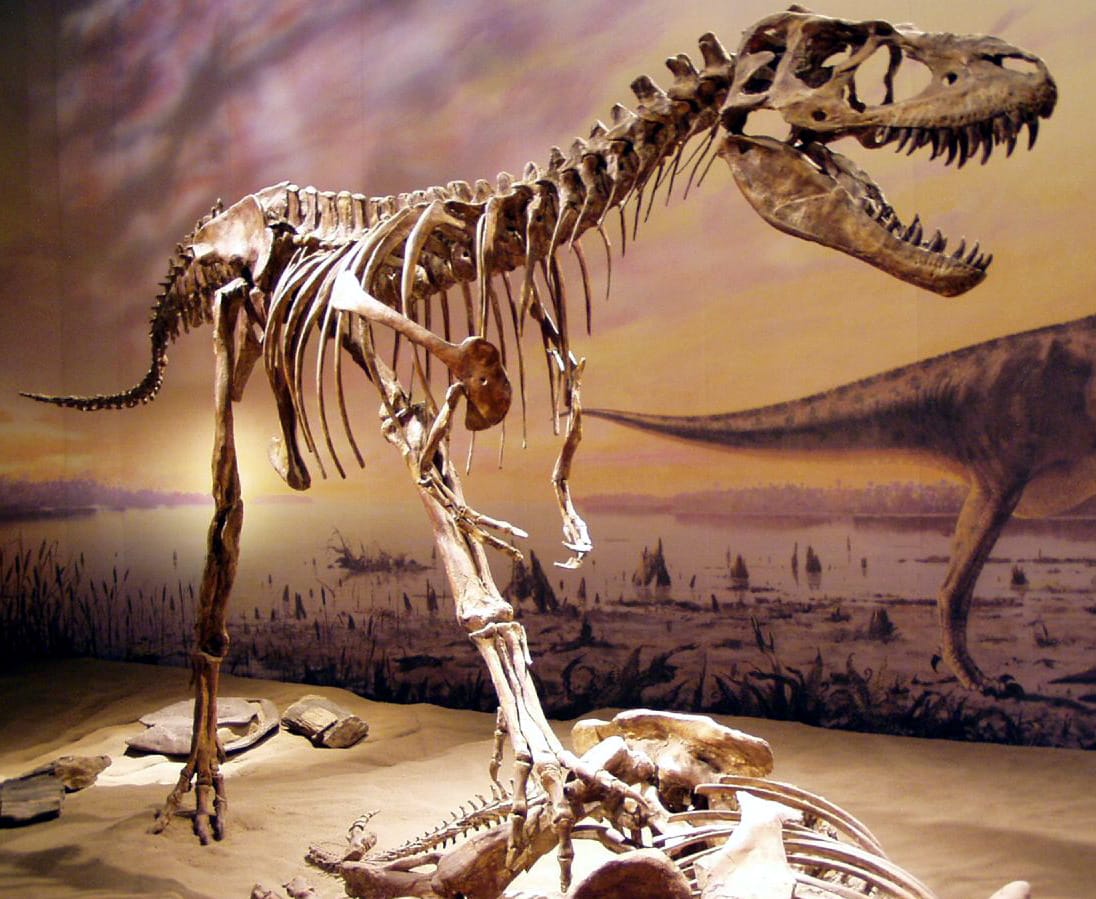This Juvenile Gorgosaurus Ate What??

When animals die shortly after eating, and are then fossilized, we can sometimes also see what they ate! Paleontologists can get a general idea of what an animal was eating based on its size and the shape of its teeth, but when we get stomach contents, it’s an amazing discovery because it gives us direct evidence of what something was eating.

In December 2023, a [study] described the stomach contents of a juvenile Gorgosaurus. Now, fossils are pretty rare in general, getting preserved stomach contents is even more rare, and all of that for a dinosaur is super rare.
Gorgosaurus libratus is a relative of Tyrannosaurus rex, and this one came from around 75 million years ago in Canada. This specimen was only a fraction the size of an adult Gorgosaurus, and growth rings inside the tibia indicated that it was between 5 and 7 years old.

Inside the lower left abdomen, approximately where the dinosaur’s stomach would have been, the authors found not 1, not 2, but 3 legs of ~1 year old Citipes (a species of within the oviraptors). Based on the positions of the legs inside the abdomen (1 was further forward than the other 2, which were folded together), and the acid marks from digestion, the authors could tell that these legs were consumed in 2 distinct feeding sessions.

The authors also checked to see if the size of the eaten legs would have made an appropriate meal for the size of the Gorgosaurus by comparing their sizes to mammal and reptile predator-prey sizes. They found that these little 1 year old Citipes would have made for a good meal for a 5-7 year old Gorgosaurus.

Importantly, they also found that any of the other available dinosaurs of the area would have been too big as adults for this juvenile Gorgosaurus to hunt. This shows that juvenile and adult Gorgosaurus was hunting different prey, and therefore could live in the same area without competing for food. This idea is called niche partitioning, and it’s vital for predatory animals to share a habitat without running out of food.
Many living birds do the same – they’ll feed their babies insects, but eat other food as adults. That way there’s enough food to go around.